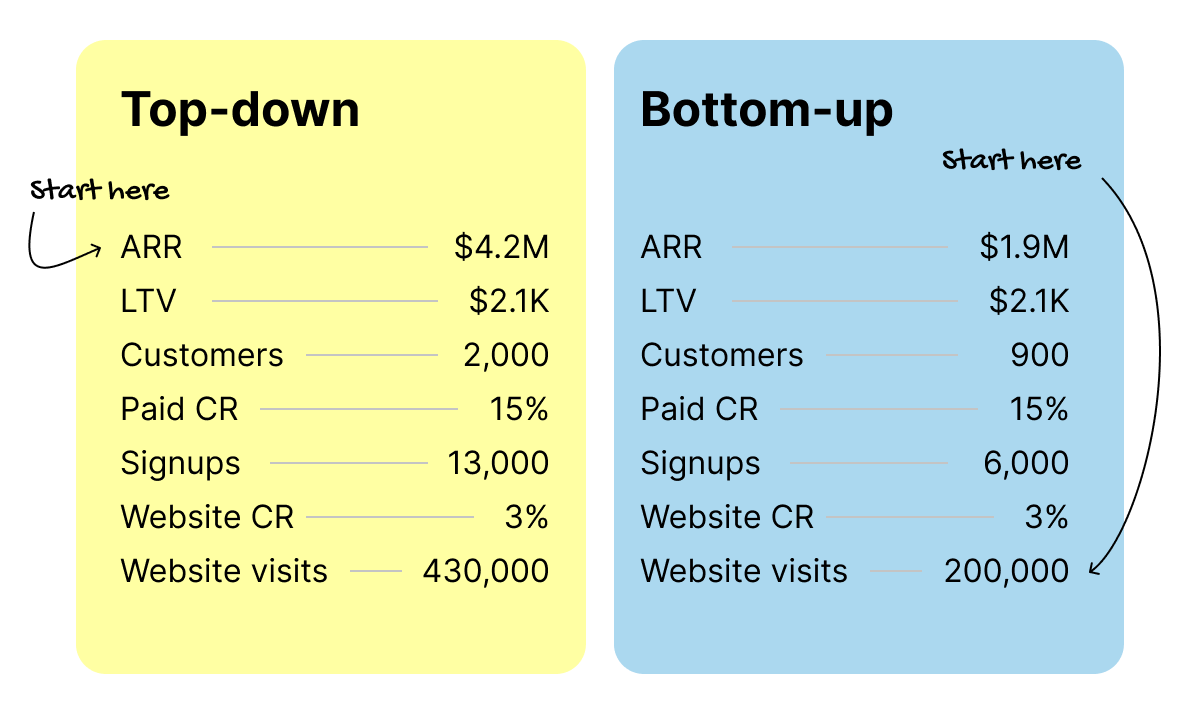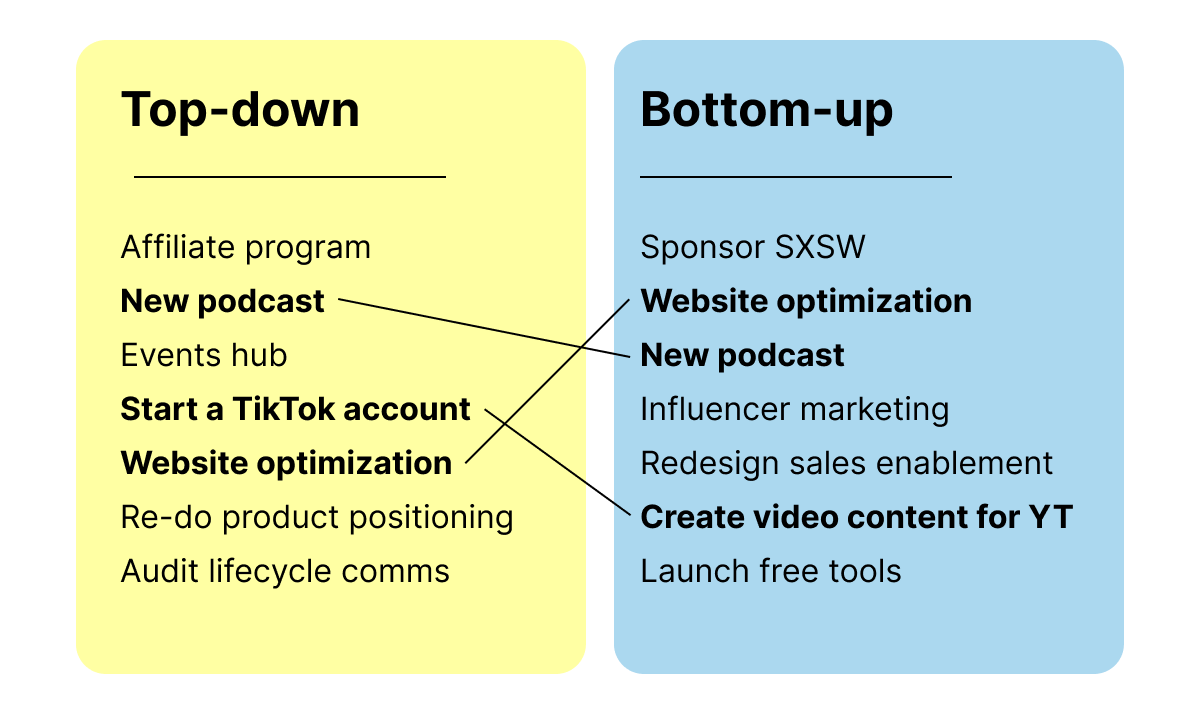Hi there 👋
I was grateful to take part recently in a Slite roundtable about decluttering your workspace and how to effectively communicate remotely. You can check out the content here, along with tips from many folks much smarter than I am! One thing that didn’t make the cut was this picture of my desktop at home. Bonus content! Enjoy:
Wishing you a great week ahead,
Kevan
(ᵔᴥᵔ)
Thank you for being part of this newsletter. Each week, I share playbooks, case studies, stories, and links from inside the startup marketing world and my time at Oyster, Buffer, and more.
Say hi anytime at hello@kevanlee.com. I’d love to hear from you.
Top-down vs. Bottom-up
Reese’s has some of my favorite commercials — they’re bold, simple, catchy, and creative. They also have one the most memorable taglines:
There’s no wrong way to eat a Reese’s
Similarly, I like to think there is no wrong way to do planning for your team.
The fact that you’re doing planning at all is the biggest win!
(I’ve been told the same about parenting. It’s not about which parenting books you read, it’s simply enough that you’re a person who cares enough about parenting to want to read a parenting book.)
But let’s say you do want to plan your marketing strategy according to best practices.
I’ve got templates galore for this kind of thing.
But generally-speaking, I have seen two different schools of thought emerge around how to best plan for what’s ahead:
Top-down — You begin with an end goal in sight or a vision from you or your manager, then figure out the path to get there
Bottom-up — You begin with your current baselines or a democratized list of ideas, and you see how far you can go from there
If you’re doing any type of modeling or KPI-driven planning, “top-down” will typically mean you’ve been given a target and need to figure out how to hit it.
If your planning is more about activities and initiatives, then “top-down” typically refers to ideas coming from the senior leadership team and being handed down to the individual contributors who will do the work.
The inverse, then, is true of bottom-up. For KPIs, a bottom-up approach arrives at a goal based on what’s possible from a baseline. For activities, bottom-up collects ideas from teammates and builds a plan based on these ideas.
So, which is better?
<alert! answer you’re not going to like>
I like to do both.
Ok, ok, I know that’s kind of a cheating answer. Here’s my official methodology:
Start with a bottom-up plan. This is great for team morale because people feel included, and goals feel grounded in reality
Add in a top-down perspective. This is essential because if your plan doesn’t meet the needs of the broader company objectives, then it’s not going to be the most effective plan
Reconcile.
In lieu of a tie, top-down wins.
But in starting with a bottom-up approach, you should be more equipped to know just how reasonable the top-down goals actually are and to advocate for amendments to overly-ambitious goal-setting. By doing a bottom-up and a top-down approach, you will see the delta between the two plans.
For example …
You may be given an ARR goal to aim for (top-down) and you need to reconcile that with the historic trends you’re seeing from your website traffic growth and conversion rates (bottom-up).
Alternately, if revenue is the goal and you’re building a bottom-up model, you may look at the past 90 days of revenue performance overall — ARR all the way to the top of your funnel — and extrapolate what you think is possible in scenarios where you’re maximizing conversion and monetization at every step of the journey.
In the example above, after doing a top-down model and a bottom-up model, you can see there’s a delta of $2.3 million in ARR. Seems like we’ll need to have a conversation!
The same process unfolds if you’re planning marketing activities. Once you compile the list of bottom-up ideas, you can reconcile with the types of activities that make sense from a top-down perspective. Ideally you’ll find some overlap, and those activities become your “must-dos” along with any other top-down ideas that seem necessary to reach your goals. If there’s bandwidth leftover, you can add bonus tasks from the bottom-up list.
Over to you
Does this resemble how you make your marketing plans?
Which method do you prefer: Top-down or bottom-up?
Let me know by replying to this email to get right in touch.
About this newsletter …
Hi, I’m Kevan, a marketing exec based in Boise, Idaho, who specializes in startup marketing and brand-building. I currently lead the marketing team at Oyster. I previously built brands at Buffer, Vox, and Polly. Each week, I share playbooks, case studies, stories, and links from inside the startup marketing world. Not yet subscribed? No worries. You can check out the archive, or sign up below:
Thank you for being here! 🙇♂️
I’m lucky to count folks from great brands like these (and many more) as part of this newsletter community.






